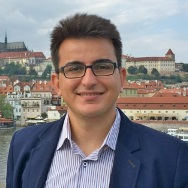Modeling of Materials Manufacturing Processes
A special issue of Materials (ISSN 1996-1944). This special issue belongs to the section "Manufacturing Processes and Systems".
Deadline for manuscript submissions: closed (10 February 2022) | Viewed by 34458
Special Issue Editor
Special Issue Information
Dear Colleagues,
Understanding, describing, and predicting material behavior during manufacturing processes is key to optimizing the final product properties. This requires detailed analysis and characterization of the material and development of advanced material models utilized in process modeling and simulation. Generally, multiphysical phenomena simultaneously take places during manufacturing, such as heat transfer, fluid dynamics, solid mechanics, changes in material state and properties, phase transformations, changes in microstructure, internal stresses, and shape deformations. This makes the computational and numerical modeling of the manufacturing processing of materials very challenging.
This Special Issue therefore aims to publish new and novel research work focusing on computational process simulations and corresponding constitutive material modeling during manufacturing from atomistic to macroscopic length scales. All classes of materials and their characterization relevant to their manufacturing processes are covered in this Special Issue. Some examples of materials to be considered are fiber-reinforced polymer composites, polymers, metals, and ceramics. Theoretical as well as applied research papers relevant to computational modeling of materials and their structure–property relationships such as physical, mechanical, thermal, electrical, and optical during processing are welcome. Utilization of various numerical techniques in process simulations such as finite element, finite difference, finite volume, discrete element, meshless, and analytical methods together with experimental validation are within the interests of this Special Issue.
Dr. Ismet Baran
Guest Editor
Manuscript Submission Information
Manuscripts should be submitted online at www.mdpi.com by registering and logging in to this website. Once you are registered, click here to go to the submission form. Manuscripts can be submitted until the deadline. All submissions that pass pre-check are peer-reviewed. Accepted papers will be published continuously in the journal (as soon as accepted) and will be listed together on the special issue website. Research articles, review articles as well as short communications are invited. For planned papers, a title and short abstract (about 100 words) can be sent to the Editorial Office for announcement on this website.
Submitted manuscripts should not have been published previously, nor be under consideration for publication elsewhere (except conference proceedings papers). All manuscripts are thoroughly refereed through a single-blind peer-review process. A guide for authors and other relevant information for submission of manuscripts is available on the Instructions for Authors page. Materials is an international peer-reviewed open access semimonthly journal published by MDPI.
Please visit the Instructions for Authors page before submitting a manuscript. The Article Processing Charge (APC) for publication in this open access journal is 2600 CHF (Swiss Francs). Submitted papers should be well formatted and use good English. Authors may use MDPI's English editing service prior to publication or during author revisions.
Keywords
- numerical modeling
- process simulations
- material modeling
- material characterization
- manufacturing processes
- heat transfer
- solid mechanics
- fluid dynamics
- structure–property relationships






